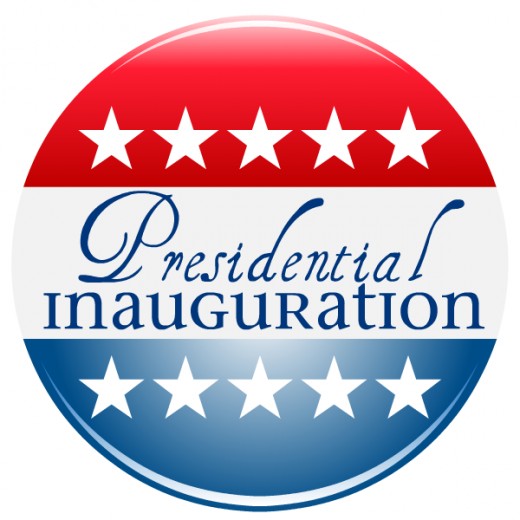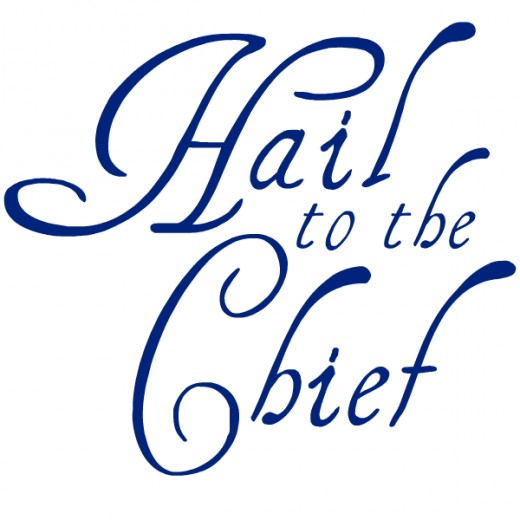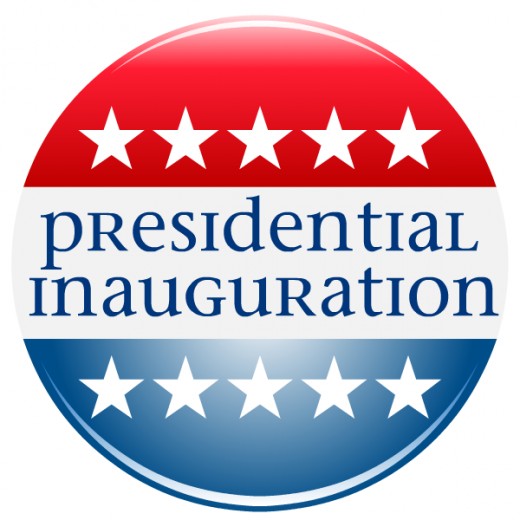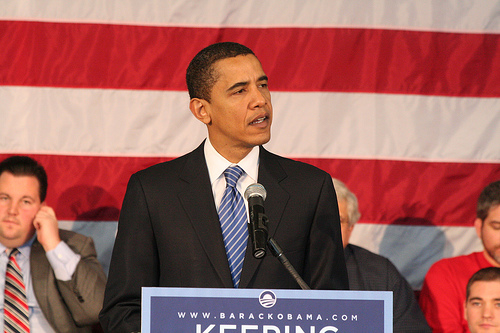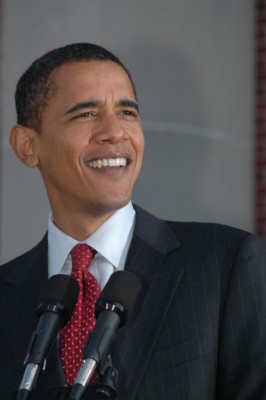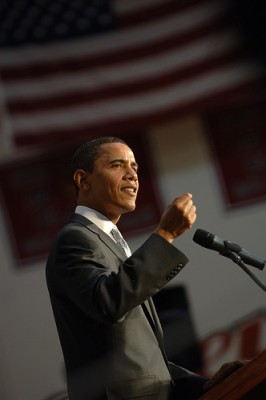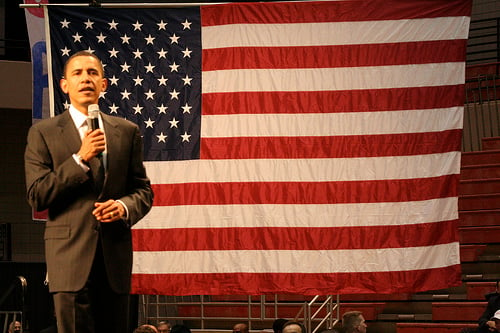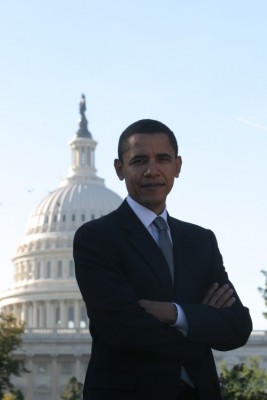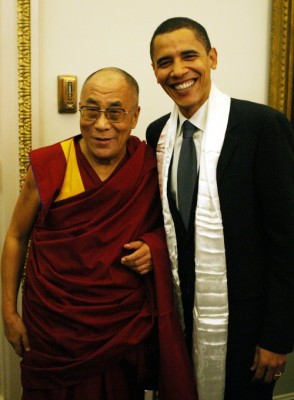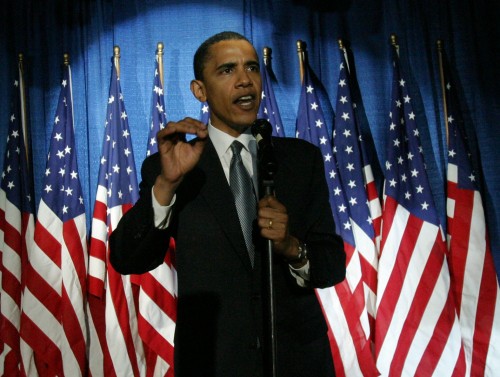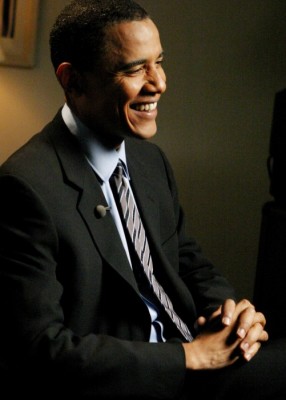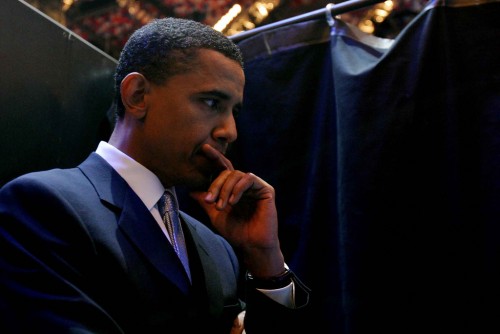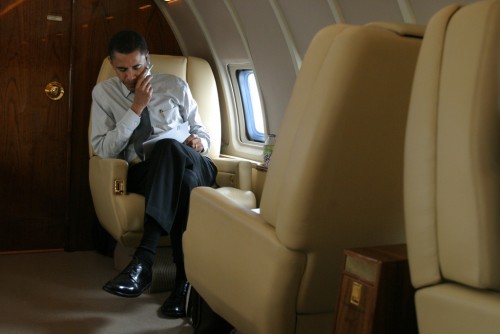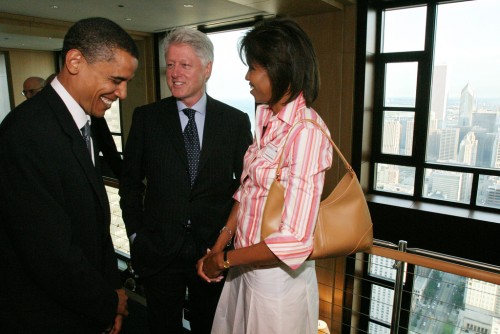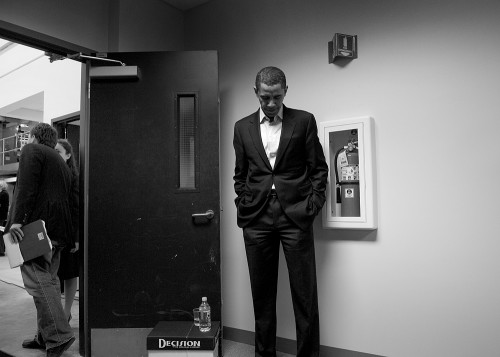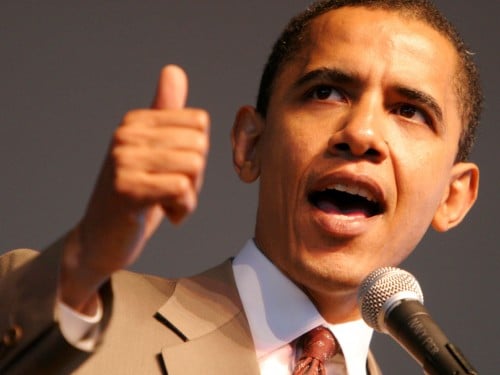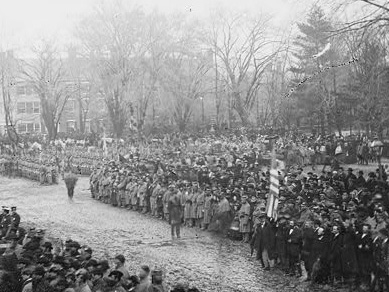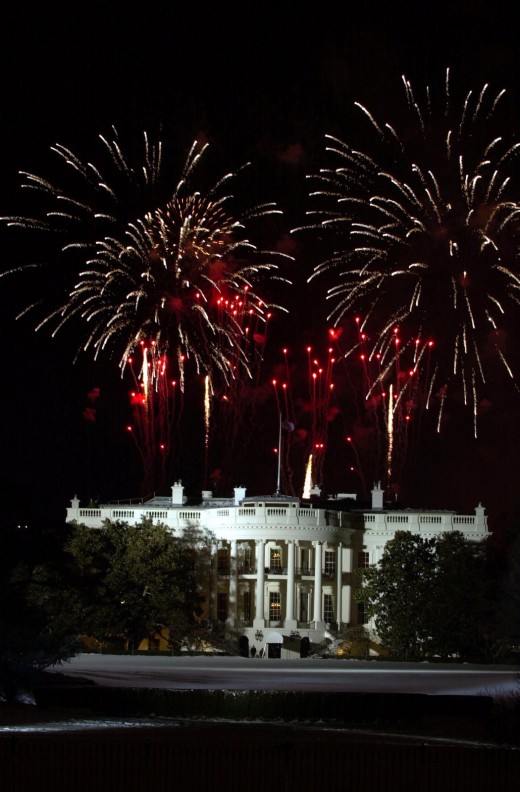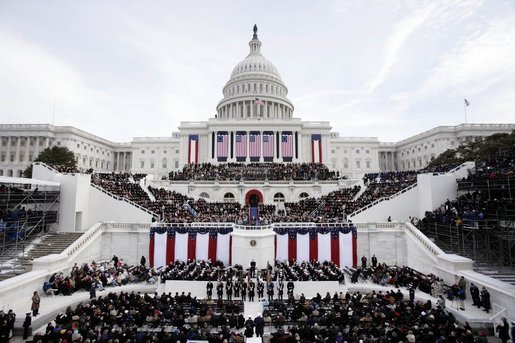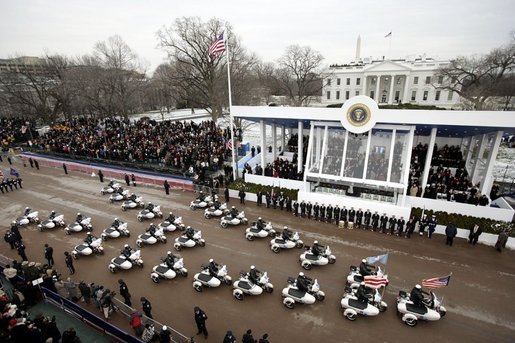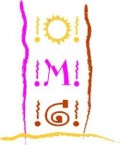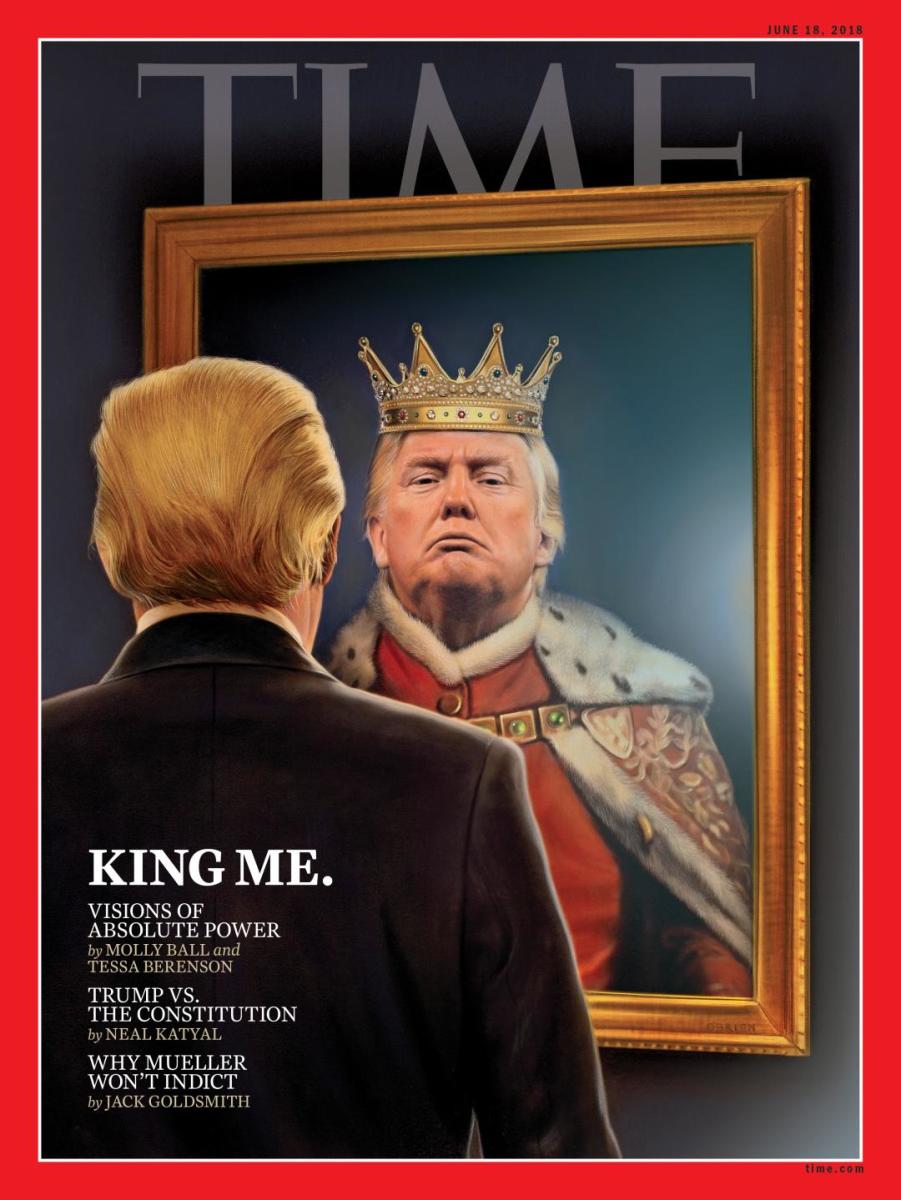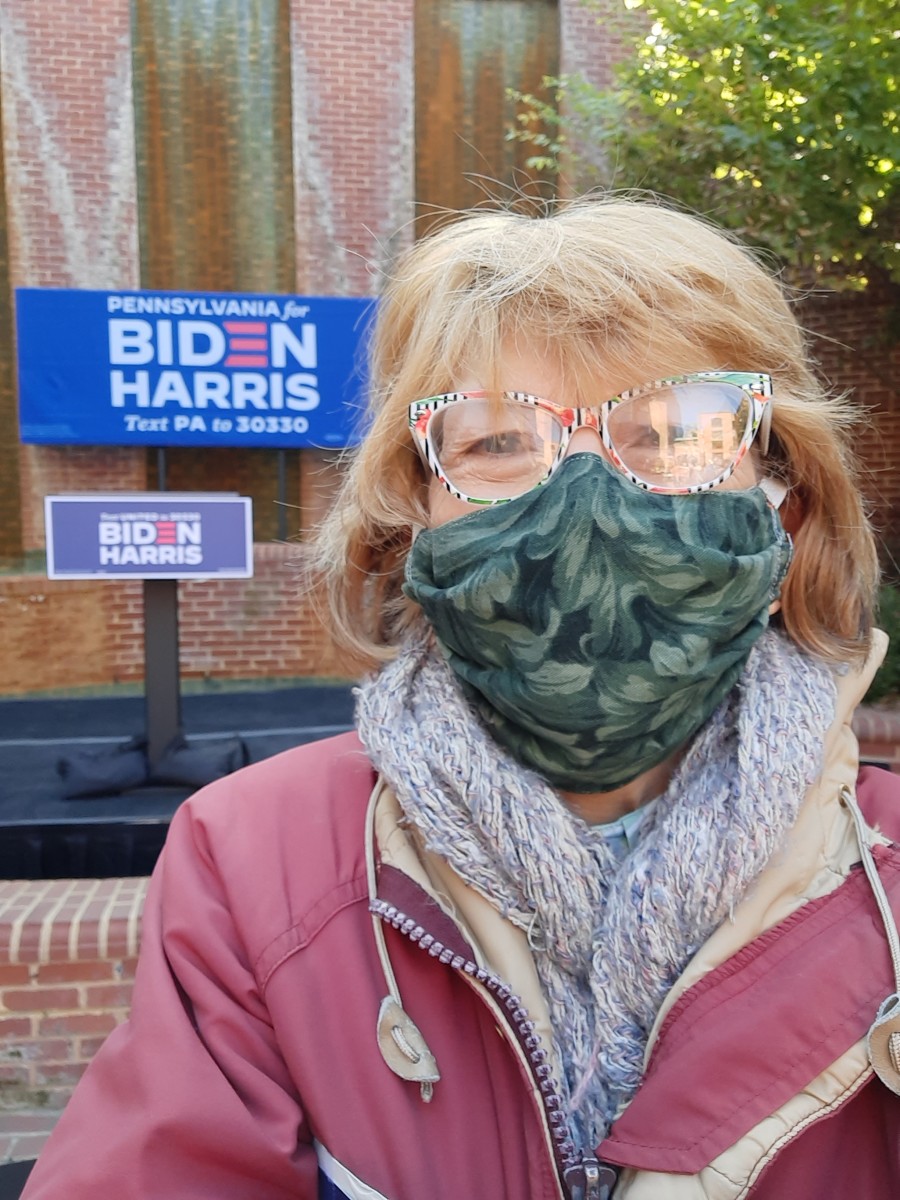Free Inauguration Day Clip Art
For those in the media -- and these days that includes hordes of bloggers -- having good images to go with significant events can be a bonus. That's why I created the United States Inauguration Day clip art that you'll find further down on this page. There's a little something for everyone here, whether you want to just announce the date of the inauguration in conjunction with an article, have generic presidential inauguration images or declare your support for the winner with the "Hail to the Chief" images.
When I first created this page in 2008, like everyone else I didn't know who would win. But I figured if the poll on my Barack Obama clip art hub was any indication, it would be Barack Obama. Interestingly, there had been very little fluctuation in the poll percentages until it got close to election day. Obama had been leading between eight and 10 percentage points up until the week before the election, when the gap began the candidates began to shrink. Then on November 4th he and John McCain became neck-and-neck with 50 percent each. Thankfully, we now know the outcome, so the guessing and polling -- and all those political ads -- can end.
2013 Inauguration Day Clip Art
Click thumbnail to view full-size




Instructions for Downloading the Inauguration Clip Art
Choose a small version of any of the clip art images above the large image. When you click on one of the images, it will appear larger. Once you've chosen an image and see it larger, double-click on the larger image, which will make the best version of the art appear.
Then, if you have a PC, just right-click and save the final version of the artwork to your hard drive. If you have a Mac, use control-click to save.
The photos are either in the public domain or from the Barack Obama 2008 campaign Web site, so you're free to use them. Please use the credit information provided.
Barack Obama and Archival Inauguration Photos
Click thumbnail to view full-size
















American Election Books
Resources for Writers and Students
How to Use the President's Name
Capitalization
People commonly believe that "president" should be capitalized at all times. According to the Chicago Manual of Style, however, that's not correct. The title is only capitalized when it appears before the president's name:
Correct: President Obama or the president
Incorrect: president Obama or the President
Exceptions to this rule:
Exception number 1: When "President" is used alone and in place of a personal name (such as during a toast or formal introduction, or when used in direct address), it should be capitalized:
Correct: Thank you, Mr. President.
Incorrect: Thank you, Mr. president.
Exception number 2: When a title is used before the president's name, and isn't part of the name but is instead a descriptive tag (often including "the"), it is lowercased.
Correct: former presidents Reagan and Clinton or the on-the-move president Bush
Incorrect: former Presidents Reagan and Clinton or the on-the-move President Bush
Note that both first and last names may be used after a title (e.g., President Jimmy Carter), but that's generally avoided in formal writing. Using that example, President Carter would be the preferred style. An exception to this would be when people with the same name have held the office, as in the case of George Bush and George W. Bush. "President George W. Bush" is generally used to differentiate the son from the father, so it's appropriate to use his full name.
Capitalization reference list
Here's a list of titles with correct capitalization:
- the president
- Mr. President
- George Washington, first president of the United States
- President Obama
- the former president Washington
- the presidency
- presidential
- the vice president
- Mr. Vice President
- Vice President Biden
- Joseph Biden, vice president of the United States
- vice-presidential duties
When to use the official title
Once the president's name has been mentioned, it no longer needs to be written again in the same document, article, etc.
Correct: President Bush will attend the Inauguration Day festivities of the incoming president. Due to protocol, Bush will come bearing gifts befitting the occasion.
Incorrect: President Bush will attend the Inauguration Day festivities of the incoming president. Due to protocol, President Bush will come bearing gifts befitting the occasion.
The President's Oath of Office
The United States will swear in Barack Obama as its 44th president at noon on January 20, 2009, which will be two weeks after votes from the Electoral College are certified by the Senate president. Our new president will take this oath:
"I do solemnly swear (or affirm) that I will faithfully execute the office of President of the United States, and will to the best of my ability, preserve, protect, and defend the Constitution of the United States."
Inauguration Day History
The first Inauguration Day ceremony was conducted for George Washington on April 30, 1789 in New York City. Inauguration Day used to be held on March 4, until the ratification of the 20th amendment to the U.S. Constitution making a potentially very cold day in January the day of choice. The 20th amendment is often called the "Lame Duck Amendment," because it reduces the amount of time that an outgoing president could be a "lame duck" and continue to serve before his successor takes office.
In1953, the United States Congress began the tradition of hosting a luncheon following the inaugural ceremony, with the president and vice president as guests of honor. This occasion is the only time that the president, vice president and both houses of Congress convene at the same location, other than state funerals, State of the Union addresses and Red Mass (a mass celebrated by the Roman Catholic Church for judges, attorneys, law school professors, students and government officials).
Inauguration Day Fun Facts
- George Washington gave the shortest inaugural address in history. It was a mere 135 words.
- Abraham Lincoln was the first president to include African-Americans in his 1865 inaugural parade. It took another 52 years for women to be included, as they finally were when Woodrow Wilson had his second inaugural parade in 1917.
- Ronald Reagan's 1981 inauguration fell on the warmest Inaugural Day in history, with temperatures reaching 55 degrees F in Washington D.C. He then broke another record by having his 1985 inauguration on the coldest day in inaugural history; it was 7 degrees.
- In 1933 Franklin D. Roosevelt became the last president to be inaugurated in March. Like Reagan, he was a double record-breaker, because he was also the first president to be inaugurated in January.
- When January 20 comes on a Sunday, the president-elect usually takes the oath of office privately and then repeats the ceremony in public the following day.That was not the case, however, with incoming president Zachary Taylor. He refused to take the oath on Inauguration Day in 1849 because it fell on a Sunday. He took the oath one day later on March 5.
- Solar heat was used to heat the reviewing stand for Jimmy Carter's 1977 inaugural parade.
- Bill Clinton was the first president to have his inauguration broadcast over the Internet.

